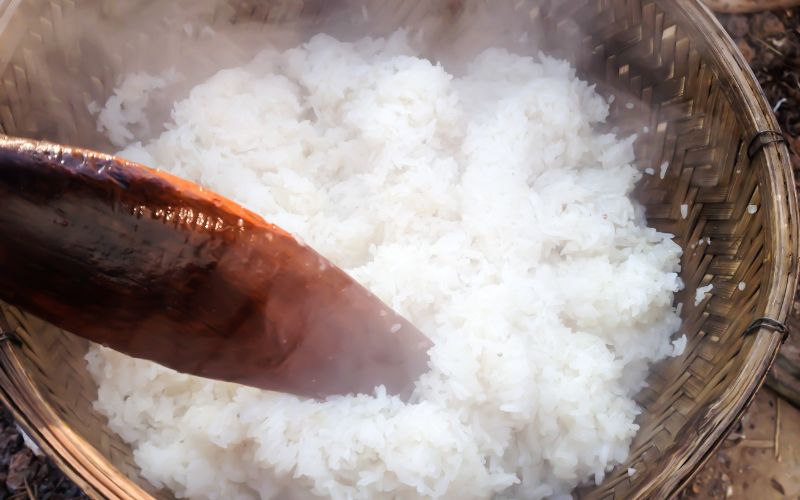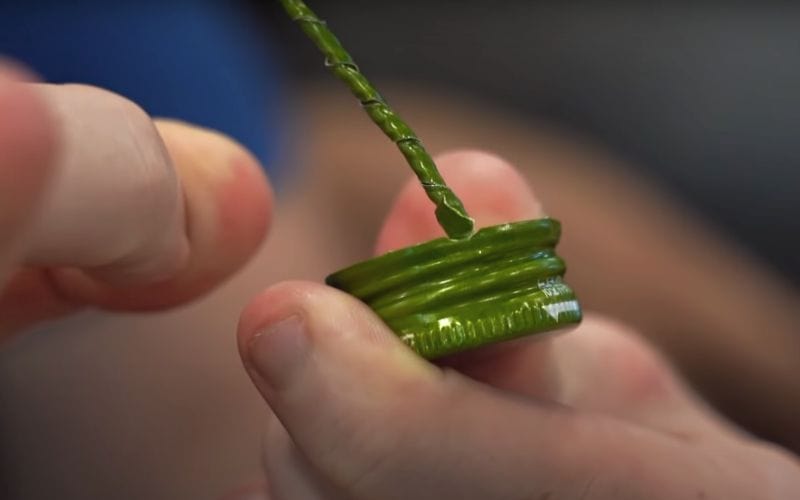
Soju: How Korea's Favorite Spirit Is Made


If the Korean Wave or Hallyu has influenced you, you’re probably familiar with soju, as it is often shown in Korean Dramas or promoted by K-pop artists. This spirit is the best-selling alcoholic beverage in the world, with Jinro as the top brand.
But how is soju made? Soju production begins with fermentation of the grain starch by yeasts and enzymes. Once the fermentation is complete, the liquid is distilled to produce clear alcohol. Finally, soju is bottled and typically has around 20% alcohol by volume.
If you haven’t tried it yet, keep reading to familiarize yourself with this thirst-provoking beverage!
Soju is a colorless distilled alcoholic beverage made from fermented rice or other grains and starches. It is often likened to a mild version of vodka and has variants in China (baijiu) and Japan (shochu).
It is the most mainstream spirit in North and South Korea. Like vodka, it usually has a neutral flavor but without the alcohol burn as it has a lower alcohol percentage, averaging 20%.
The name “soju” translates to “burnt liquor,” which relates to its distillation process. It is typically drunk straight with meals, but it also works nicely in cocktails.

The traditional way of producing soju has been passed down through generations. While the flavorings and sweeteners may differ, the process remains relatively the same.
The first step is to combine Nuruk, a fermentation starter made from ground wheat, with water. Once the consistency is right, the mixture is poured into a cloth-lined container and packed into a mold using the heel of the brewer’s feet to make what’s known as wheat cake.

Wheat cakes on a basket - Image by makgeollilab.com
Then, the wheat cake is taken out of the mold and left to ferment, so yeast and other microorganisms can grow on it. During this process, moisture is also drawn out of the cake, making it solid; this will take about three weeks. After this period, the disk or the cube of Nuruk is pounded in a mortar until powdery.

Meanwhile, white rice is steamed in large batches and allowed to cool to the proper temperature. This step is important because the soju may taste bitter or sour if the rice is still too warm when proceeding to the next step.
When the rice is fully cooled, it is mixed with crushed wheat and a little water to make a mash, which is a bit dry at this point. Then, the mixture is transferred to a crock or brewing vessel, stirred, and allowed to ferment for more or less 12 days.

Jars of Wonju - Image by HyesunHouse
When fermentation has stopped, the mixture, now having more liquid, is strained through linen or cheesecloth into jars. The resulting white liquid is what’s called Makgeolli, another Korean drink. But to make soju, this liquid will still undergo more processes.
After a few days, the liquid will form two layers, which, as a whole, is called “Wonju.” In the old days, each layer of liquid was reserved for different classes in Korean culture.
The upper portion is a golden, clear liquid known as “Cheongu” or “Yakju,” consumed by the upper class of nobles called Yangban. The lower portion is a cloudy white mixture called “Takju” composed of rice sediments used by the lower class, including commoners and farmers. They diluted this with water so they could make their Makgeolli.

Sojugori - Image by korikart.com
Only the Cheongu is siphoned for soju, put in the Sojugori (a two-story distillation apparatus with a pipe connected), and then boiled. The gaps are sealed with flour dough so vapor can’t escape when boiling the liquid.
Modern soju production distills the liquid in copper pot stills or huge vacuum distillation units to make large batches. After distillation, the soju is stored in vats or barrels to age, and after some time, it finally gets bottled.
Some manufacturers add more sugar or flavorings or dilute the soju with water to lessen the alcohol concentration.
Soju is a bit harder to make at home than other Korean drinks, such as Makgeolli, since it is distilled. But if you have the right ingredients and equipment and follow the process correctly, you can definitely succeed. Here is a video for reference:

In general, soju has a neutral taste. Some people describe it as watered vodka, making it appealing to novice and light drinkers.
You will notice a little jolt in your throat when you take a shot of soju in its purest form. After a while, you'll notice a slight burn followed by a pleasant, refreshing sweet sensation lingering in your mouth.
Flavored soju, such as grapefruit, blueberry, peach, grape, and apple, is a bit sweeter and tastes less alcoholic.
Drinking soju is not only a fun experience but also a social practice that begs interaction with friends, colleagues, or family. Koreans don't usually serve or drink soju by themselves. Pouring soju for others fosters a sense of togetherness and is one of Korea's oldest customs.
Here are some guides on how to drink and enjoy soju:
 Swirling a soju bottle - Image by Drew Binsky
Swirling a soju bottle - Image by Drew Binsky
Opening a soju bottle has a ritualistic approach that pays homage to tradition and adds more fun to the experience.
First, swirl the bottle until the liquid forms a whirlpool. Then, turn the bottle upside down and tap on the base with your elbow. Turn it upright again, open the cap, and hit the bottle’s neck with the space between your index and middle finger.
This action is linked to how soju was traditionally served. The bottle is shaken when cork pieces are mixed in the soju, prompting the pieces to rise. After opening, the bottle is hit to eliminate cork particles.
Since bottles today have metal caps, this step may seem unnecessary; however, people still do it to keep the tradition alive.

The general rule is not to fill your own glass. In Korea, pouring yourself a drink of soju is disapproved and frequently considered impolite.
The oldest individual or one with the highest rank or status pours the glasses first, and then his glass will be poured by the younger member.
While being poured soju, raise and hold the glass with both hands. Since the shot glass is small, you may hold it in your left palm while supporting it with your right.
Another gesture of respect is bowing your head lightly when accepting a drink. But, if you're drinking with close pals, you can occasionally get away with breaking this rule.
When it’s time to refill the drinks, the group members take turns filling each other’s glasses.

After every glass is filled, people would clink their glasses and say “Geonbae!” or “Jjan,” which is Korean for “Cheers!”. If you’re the younger person or one with a lower rank, your glass would be positioned lower than your superior’s when clinking.
Turn to the side and conceal the cup with your hand while drinking. When you're with your buddies, you may also disregard this rule. The first glass is usually taken in one go. After that, you can pace yourself by taking sips.

Like wine, soju is best consumed with food. “Anju” is the Korean term for food served with alcohol. Here are some of the best anju to eat with soju:

A person flicking a Soju cap - Image by Drew Binsky
Since soju is consumed among friends, it’s only natural to play some games while drinking. One match is played by taking the cap, twisting the metal bit, and taking turns flicking it. Whoever flicks it off the cap wins! The losers must take a shot of soju.
 Titanic Soju game - Image by Drew Binsky
Titanic Soju game - Image by Drew Binsky
The other game is dubbed “Titanic,” which involves putting a shot glass in a glass of beer. People take turns pouring soju into the glass. Depending on their strategy, they can pour as much as they want. Whoever sinks the shot glass has to down the beer and soju mixture.

As opposed to what you might expect, this national Korean drink didn’t originate in Korea. Mongol raiders introduced it during the early 13th century under the Goryeo Dynasty.
Soju was introduced and disseminated through wartime since it was first created in Arabia as "arak" and then transported through the Mongols before reaching Korea.
The invasion headed by Genghis Khan brought the Levantine distillation process to the Korean Peninsula from Arabia. Distilleries were eventually built around Gaegyeong, a city currently known as Kaesong, which was Goryeo's capital at the time.
Afterward, Genghis Khan's grandson, Kublai Khan, commanded the Yuan Dynasty to march into the Korean Peninsula and build a supply base in Andong. During the Silla Dynasty, there was the spark for the creation of Andong soju, the forerunner of today's soju.
Like most alcohols before, soju was only accessible to a few people, mainly those of high status, and was used as medicine. Over the years, others learned the technique and made their soju in their homes.

Rice and wheat were the key components in traditional soju, distilled to give it its high alcohol level. However, during the Post-Liberation Period in 1965, the government outlawed the use of rice to produce alcohol due to scarcity.
With this, South Korea began making alcohol from sweet potatoes or tapioca, giving rise to many of the most recognized Soju brands.
In 1999, the prohibition was repealed, but the various forms of soju continued being produced, resulting in the diverse range we have today. The alcohol concentration of these new taste profiles is considerably lower, making them approachable and easy to drink for many consumers.

Since soju is an alcoholic beverage, you will get drunk if you consume enough or go above your limits. However, you’ll get intoxicated slower if it's made as a cocktail than drinking it purely in shots.
Soju contains roughly 15% to 46% ABV, while sake only has 15% to 20% ABV. In terms of alcohol content, sake and flavored soju are similar to wine, but traditional soju is more akin to vodka and whiskey.
It depends on the type of soju. It is recommended to first try the best-seller, mainstream variant, or soju with a low ABV to avoid being stunned by the alcohol’s kick.
Whether you’ve heard about soju from TV shows or other means, we hope that learning about its history, production, and consumption made you appreciate this beloved drink more.
There are many types to try including traditional soju and those with different flavors. Either way, you are assured of having a fantastic time with friends or family.
What are your thoughts about soju? Leave a comment below!
Read Next: Sake: A Beginner’s Guide
my first time to try today, had one bottle alone and liked the taste of origanal,,,,got me a bit drunk , but enjoyed it. Will pace myself better next time and will try the fruit flavor!!!


Standard ground shipping is free for all US orders
We are now accepting CA and MX orders! Check here for more details.